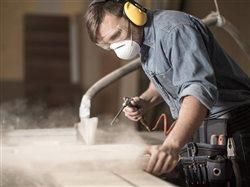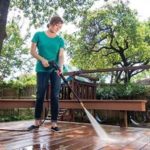
(BPT) – How likely are you to experience hearing loss because of your job? You may think you’re safe if your job doesn’t involve operating noisy machinery, but hearing loss can occur whenever you’re regularly exposed to sounds of 85 decibels (dB) or louder. That means in addition to people in occupations you’d expect to be at risk of hearing loss — such as miners, construction and factory workers — landscapers, truck drivers, police officers and even school teachers can also be at risk of noise-induced hearing loss (NIHL).
In fact, NIHL is the most common type of work-related injury in the U.S., affecting 22 million workers, according to the Centers for Disease Control and Prevention. Hearing loss is more common than diabetes and cancer, and far more preventable than either ailment.
Here are 10 occupations where exposure to loud noise could lead to hearing loss:
1. Miners — In a study by the National Institute for Occupational Safety and Health (NIOSH), people working in the mining industry had the highest incidence of hearing impairment, with 17 percent of workers experiencing some level of hearing loss.
2. Construction workers — Sixteen percent of workers in the construction industry have hearing impairment, according to NIOSH. They’re typically working in environments where decibel levels average nearly 87, OSHA reports.
3. Factory workers — Among people who work in manufacturing, 14 percent have hearing loss, NIOSH says.
4. Emergency and law enforcement services — Police, firefighters, ambulance drivers and corrections officers also have a high rate of hearing loss, according to NIOSH.
5. Farmers — Operating farming equipment means agricultural workers may regularly be exposed to nearly 87 dB, OSHA says.
6. Airport workers — From 200 feet away, a jet taking off generates 130 dB of sound; 140 dB can cause physical pain, according to OSHA.
7. Landscapers — Lawn mowers, trimmers and other landscaping equipment generate high decibels, commonly in the range of 85-100.
8. Musicians and crew — Rock concerts are notoriously loud events, generating volumes of 110-140 dB.
9. Teacher/daycare worker — Classrooms full of kids can be noisy places. According to OSHA, classroom chatter typically generates about 70 dB of sound — a safe level. However, at times classroom noise can easily top 85 dB, the leading edge of the volume at which noise-related hearing injury can occur.
10. Retail workers — Anyone who has shopped in a crowded store at the holidays knows retail work can be noisy. In fact, the median decibel level of retail and wholesale settings is nearly 87 dB, according to OSHA.
The very good news is no matter what type of job you have, it’s possible to protect your hearing from NIHL. What’s more, if you’ve already experienced hearing loss, hearing aids can help you hear and understand better in everyday environments, including the workplace.
You can protect your hearing by:
* Being aware of things that expose you to very loud noise, such as lawnmowers or machinery at work.
* Turning down the volume when you listen to music, and ensuring earbuds and headphones are used properly and in moderation.
* Avoiding sources of loud noise whenever possible.
* Wearing hearing protection devices when you have to be exposed to loud noise.
Only a hearing care professional can diagnose hearing loss, and once NIHL occurs it can’t be cured. However, hearing aids from manufacturers like Signia are very effective at helping people with hearing loss hear well again. Signia hearing aids are especially useful for people still in the workforce, since they allow wearers to keep up at meetings, hear instructions from their boss, and engage in conversation with co-workers.
These smart hearing aids can allow you to focus on a specific voice and suppress unwanted background noise in a roomful of sound. They can also connect to Bluetooth(R)-enabled devices, so you can stream sound directly from your smartphone or computer to your hearing aids. Small and discreet, it’s nearly impossible for the aids to be seen by others. Visit www.signiausa.com to learn more.






